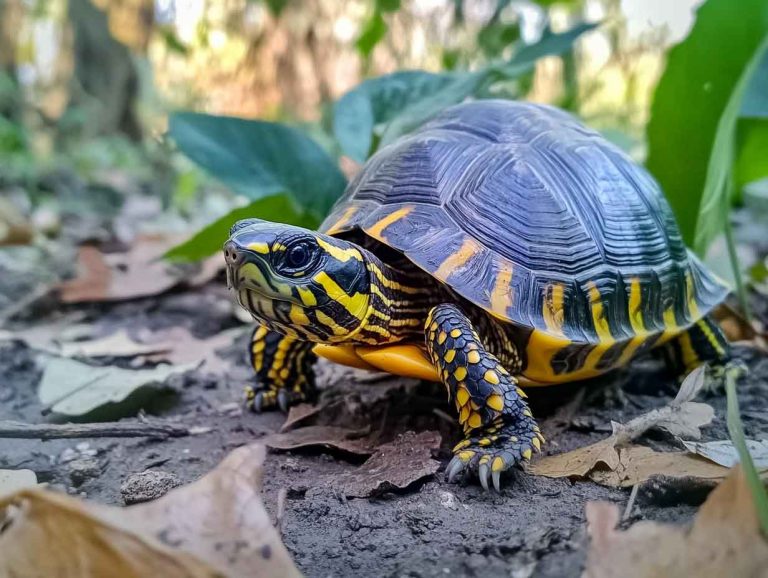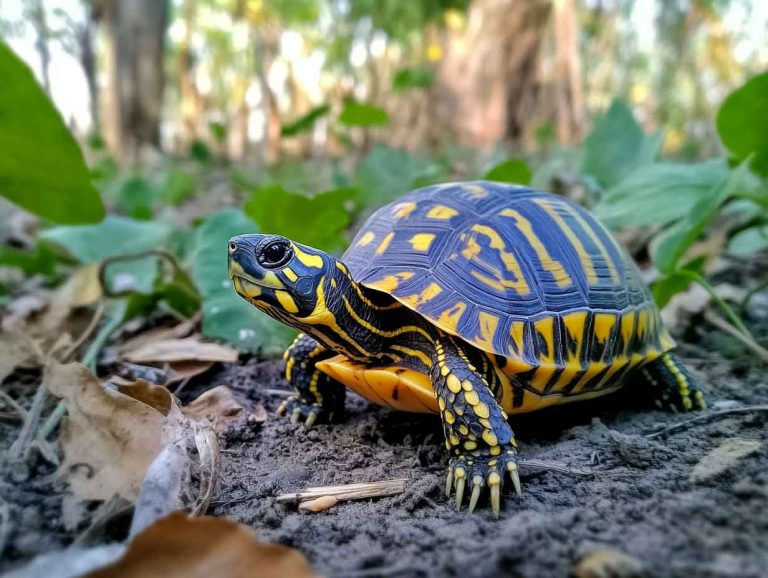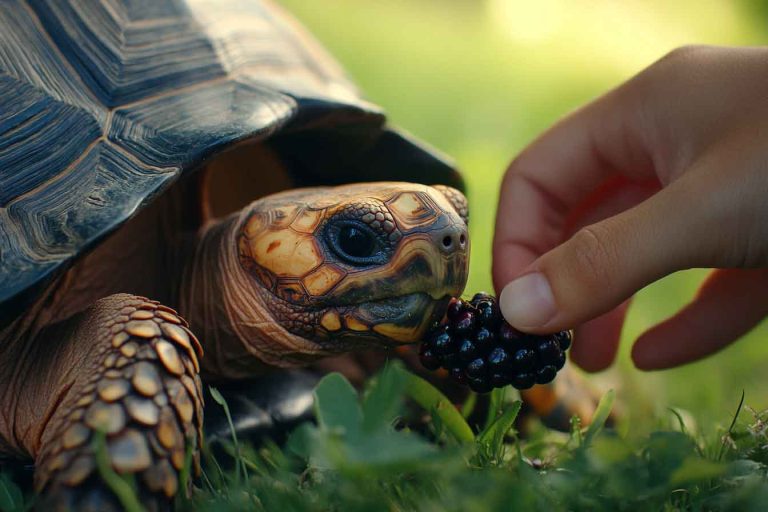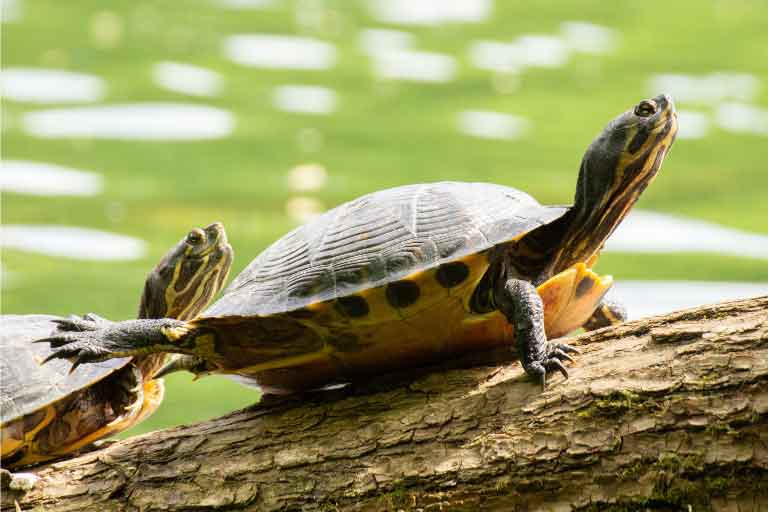Do Alligator Snapping Turtles Bite People? Is It Deadly?
Hey there, turtle enthusiasts! If you’ve ever come across an alligator snapping turtle, you might’ve felt a mix of awe and caution. These prehistoric-looking creatures are fascinating, but their powerful jaws can make anyone wonder: do they bite people, and could it be deadly? As someone who’s spent time learning about these incredible reptiles, I’m…
Hey there, turtle enthusiasts! If you’ve ever come across an alligator snapping turtle, you might’ve felt a mix of awe and caution. These prehistoric-looking creatures are fascinating, but their powerful jaws can make anyone wonder: do they bite people, and could it be deadly? As someone who’s spent time learning about these incredible reptiles, I’m here to share what I’ve discovered about their behavior and how to stay safe around them.
Alligator snapping turtles are among the largest freshwater turtles in the world, and their intimidating appearance—think armored shells and beak-like jaws—can make them seem like something out of a dinosaur movie. While they’re not out to hunt humans, they can bite if they feel threatened. In this article, I’ll walk you through why these turtles might snap, what their bite is like, and whether it could be dangerous. Let’s dive in!
Do Alligator Snapping Turtles Bite?
Yes, alligator snapping turtles can and do bite when they feel provoked or threatened. Unlike smaller turtles, these guys have a reputation for being more solitary and defensive. In the wild, they spend most of their time lurking in rivers, lakes, and swamps, using their worm-like tongue to lure fish. But if you disturb their peace, they’re not shy about using their powerful jaws to defend themselves.
The Bite Mechanism
Alligator snapping turtles don’t have teeth, but don’t let that fool you. Their jaws are equipped with a sharp, hooked beak that can deliver a crushing bite. I’ve read that their bite force can reach up to 1,000 pounds per square inch—strong enough to snap through bones or even small branches! This makes their bite far more powerful than that of smaller turtles, like mud turtles, which I’ve covered before. They use this force to crush the shells of their prey, like fish, frogs, or even other turtles.
When it comes to humans, a bite usually happens if you’re handling them improperly or accidentally step on one in the wild. I’ve heard stories from fishermen who got too close while trying to free a turtle from a net, and let’s just say it wasn’t a pleasant experience. Their bite isn’t just painful—it can cause serious injury, which I’ll get into later.
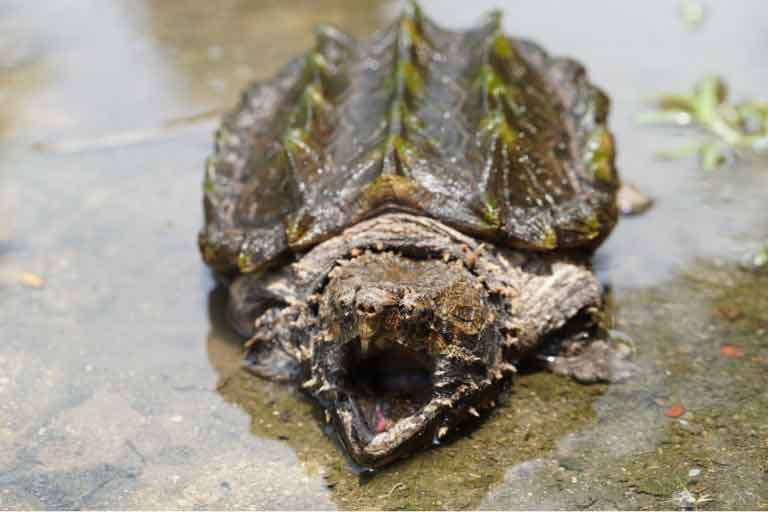
Reasons Why Alligator Snapping Turtles Might Bite You
As I’ve learned from researching these fascinating creatures, alligator snapping turtles don’t bite just for fun—they’ve got specific reasons for snapping. Here are the main ones:
1. To Protect Themselves
The number one reason an alligator snapping turtle might bite is self-defense. If you try to pick one up or get too close to its face, it’s going to feel threatened. I’ve seen videos of people trying to handle these turtles without proper gear, and it’s no surprise they end up with a painful lesson. In the wild, they’re used to being left alone, so any sudden movement can trigger their defensive instincts.
2. Mistaking Fingers for Food
These turtles are opportunistic feeders, and their eyesight isn’t the best. If you’re dangling your fingers near their mouth—say, while trying to feed them or untangle a fishing line—they might mistake your hand for a tasty snack. I’ve heard of cases where people got bitten because the turtle thought their finger was a fish. Trust me, you don’t want to be on the receiving end of that mix-up!
3. Territorial Behavior
Alligator snapping turtles can get territorial, especially in the wild where they’ve claimed a spot in a river or swamp. If you accidentally step into their space, they might lunge to protect their turf. I’ve read about swimmers in southern U.S. rivers getting a scare when they got too close to a hidden snapper. Even in captivity, if their tank feels cramped or they’re stressed, they might snap to assert dominance.
Can an Alligator Snapping Turtle Bite Off Your Finger or Toe?
This is where things get serious. Yes, an alligator snapping turtle can bite off a finger or toe, especially if it’s a larger adult. Their jaw strength is no joke—I’ve come across reports of them severing fingers, particularly in cases where someone was handling a turtle carelessly. Unlike mud turtles, which might just bruise you, an alligator snapper’s bite can cause catastrophic damage. I’ve even heard of rare cases where they’ve bitten through thicker body parts, like a hand or foot, though that’s less common.
The risk is higher with wild turtles, as they’re less accustomed to humans and more likely to react aggressively. In captivity, a well-cared-for turtle might be less likely to bite, but I wouldn’t bet my fingers on it. Always handle them with extreme caution or, better yet, leave it to professionals.
What Happens When an Alligator Snapping Turtle Bites?
If an alligator snapping turtle bites you, it’s not just a little nip—it can be a serious ordeal. The bite can cause deep cuts, broken bones, or even amputation in extreme cases. I’ve read about people needing stitches or surgery after a bad encounter. The pain is intense, and the injury can take weeks to heal, especially if the turtle’s beak crushes tissue or bone.
Beyond the physical damage, there’s another concern: infection. Like many turtles, alligator snappers can carry Salmonella bacteria in their mouths. If the bite breaks the skin, you’re at risk of infection, which can lead to symptoms like fever, nausea, or worse. I’ve seen advice from wildlife experts stressing the importance of immediate medical attention for these bites, even if they seem minor at first.
Is an Alligator Snapping Turtle Bite Deadly?
While a bite from an alligator snapping turtle is unlikely to be fatal, it can be life-threatening in rare cases. For example, if the bite causes severe bleeding or damages a major blood vessel, it could become dangerous without prompt treatment. Infections like Salmonella can also escalate if untreated, especially in kids or people with weaker immune systems. I’ve come across a few horror stories where untreated bites led to serious complications, but these are exceptions, not the rule.
The good news? With proper care, most people recover fully. Still, I wouldn’t take any chances with a turtle that can bite harder than a pitbull!
What To Do If an Alligator Snapping Turtle Bites You
If you’re unlucky enough to get bitten, stay calm—panicking will only make things worse. Here’s what I’ve learned about handling the situation:
- Don’t Pull Away: If the turtle is still latched on, don’t yank your hand or foot away. This could worsen the injury. Instead, try to gently place the turtle in water or hold it still until it releases its grip.
- Clean the Wound: As soon as you’re free, wash the bite thoroughly with soap and warm water for at least 5 minutes. Disinfect it with an antiseptic to reduce the risk of infection.
- Seek Medical Help: For any bite that breaks the skin, see a doctor immediately. They might prescribe antibiotics to prevent Salmonella or other infections. If the bite is severe, you may need stitches, X-rays, or even surgery.
- Monitor for Symptoms: Keep an eye out for signs of infection, like swelling, redness, or fever, over the next few days. If anything seems off, get back to the doctor ASAP.
If the bite doesn’t break the skin, you’re likely in the clear after cleaning it well, but I’d still be cautious and watch for any unusual symptoms.
Tips To Avoid Getting Bitten by an Alligator Snapping Turtle
Prevention is the best strategy when it comes to these powerful turtles. Here’s what I recommend to stay safe:
1. Avoid Handling Them
Unless you’re a trained professional, don’t try to pick up or handle an alligator snapping turtle. In the wild, give them plenty of space—especially if you’re fishing or swimming in their habitat. In captivity, use tools like tongs or gloves if you need to move them.
2. Provide Proper Living Conditions
If you’re keeping one as a pet (which I don’t recommend unless you’re an expert), make sure their tank is spacious—at least 100 gallons for an adult. Stressful conditions, like cramped spaces or dirty water, can make them more aggressive. I’ve seen happier turtles in well-maintained setups, and they’re less likely to snap.
3. Be Cautious During Feeding
Never hand-feed an alligator snapping turtle. Use long tongs to offer food, and keep your fingers far from their mouth. I’ve heard of too many bites happening during feeding time because someone got careless.
4. Approach with Care
If you must interact with one, approach from the side or rear, never from the front where their jaws can reach you. Pressing gently on their shell can sometimes make them retreat, but I’d leave this to experts.
FAQs
1. Do Alligator Snapping Turtles Have Teeth?
No, they don’t have teeth, but their sharp, beak-like jaws are just as dangerous. These beaks are designed to crush prey and can easily injure a human. They keep growing throughout the turtle’s life, staying razor-sharp.
2. Are Alligator Snapping Turtles Good Pets?
Honestly, I wouldn’t recommend them as pets unless you’re an experienced reptile keeper. They require massive tanks, specialized care, and can be dangerous to handle. Plus, they can live over 70 years, so it’s a huge commitment.
3. Where Are Alligator Snapping Turtles Found?
You’ll find them in the wild across the southeastern U.S., in rivers, lakes, and swamps from Florida to Texas. They love slow-moving, murky waters where they can hide and hunt.
Final Words
Alligator snapping turtles are incredible creatures, but they’re not to be messed with. Their bites can be painful, potentially dangerous, and even lead to serious injury or infection. Whether you’re exploring their natural habitat or considering one as a pet, respect their space and power. I’ve shared these tips to help you stay safe, but the best advice is to admire these turtles from a distance.
If you get bitten despite your best efforts, don’t panic—just follow the steps I outlined and get medical help if needed. Want to learn more about other turtles, like box turtles or red-eared sliders? Check out my other articles for more turtle talk!

